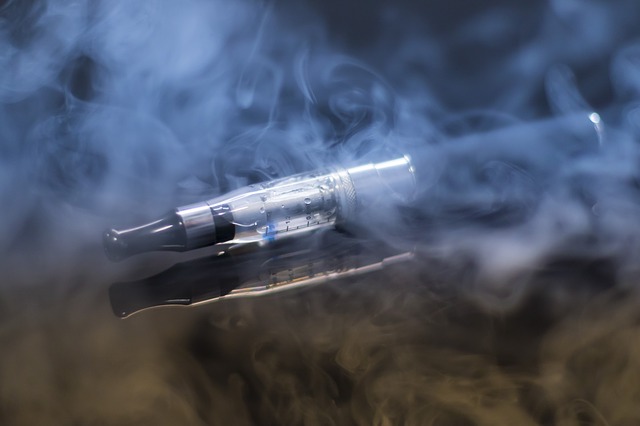Electronic cigarettes (e-cigarettes) are becoming increasingly prevalent, particularly amongst high school students and young adults. In the United States alone, the percentage of high schoolers using e-cigarettes increased from 1.5% in 2011 to 15% in 2015. Of this group, an estimated 66% exclusively use flavoured e-cigarettes. The rise in e-cigarette use is partly because they are marketed as a safer alternative to traditional cigarette smoking. While this may be true in some respects, many fail to appreciate that e-cigarettes themselves are not entirely safe, since they contain several harmful chemicals, including nicotine and humectant propylene glycol.
A recent study by Chapman and colleagues, published in Scientific Reports, investigated the effects of different flavoured e-cigarettes on the development and severity of allergic airway disease. The entire study period lasted a total of 21 days. During this time, adult female and male mice were administered house dust mites (HDM) through the nose on day 0, 7, and 14-18 to mimic allergic airway diseases like asthma. During the same period, groups of mice were exposed to e-cigarettes from day 0 to 18 with two 30-minute sessions per day. The different exposures included either standard room air (no flavour), propylene glycol/vegetable glycerin, black licorice, Kola, Banana Pudding, or Cinnacide. Each e-cigarette flavour was administered with or without nicotine. Assessment of airway inflammation, responsiveness, and remodeling was performed on day 21 of the experiment, 72 hours after the final e-cigarette exposure.
The authors found that mice that were given HDM and were exposed to e-cigarettes without nicotine had higher numbers of total inflammatory cells, irrespective of the flavour. Interestingly, however, Cinnacide was associated with lower total leukocytes and eosinophils, which are types of immune cells, relative to mice that were exposed to room air. In contrast, Black Licorice was associated with increased macrophage (immune cell type) numbers when compared to mice that were exposed to room air. Furthermore, the results showed that nicotine lowered airway inflammation that was associated with HDM, irrespective of the flavour. Moreover, while HDM treatment increased airway hyperresponsiveness, there were no differences between room air, propylene glycol/vegetable glycerin, or the different flavours with or without nicotine. The authors also showed that nicotine-free e-cigarette exposure after HDM treatment resulted in increased airway remodeling as evident by higher levels of lung collagen. Interestingly, Banana Pudding flavour was associated with a significantly higher lung collagen content when compared to mice that were exposed to room air. Similar increase in lung collagen content was observed with nicotine-containing e-cigarettes after HDM treatment. However, there were no differences between the different flavours.
Collectively, these findings show that flavoured e-cigarettes with or without nicotine do have a significant effect on allergic airway diseases, like asthma. The molecular basis and consequences of these effects warrant further investigation. Moreover, the study demonstrated that the effects of e-cigarettes on asthma may be flavour specific. Further research is necessary to fully characterize the effects of different flavoured e-cigarettes on lung health. This research could help inform future policies that restrict specific flavours of e-cigarettes that have the most adverse consequences on health.
Written by Haisam Shah, BSc.
Reference: Chapman, D. G., Casey, D. T., Ather, J. L., Aliyeva, M., Daphtary, N., Lahue, K. G., … & Irvin, C. G. (2019). The Effect of Flavored E-cigarettes on Murine Allergic Airways Disease. Scientific reports, 9(1), 1-11.
Image by Roland Mey from Pixabay



